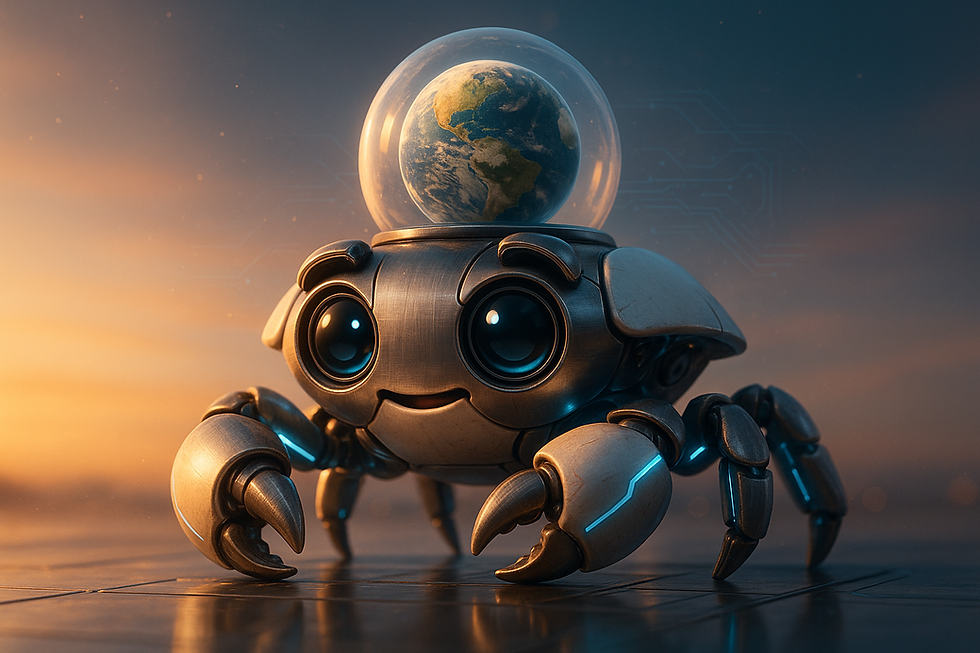Mapping the Mind: How Stanford's AI-Powered Digital Twin Is Redefining Neuroscience
- hashtagworld
- Apr 13
- 3 min read
A new age of cognitive simulation and what it means for the future of biology, computing, and consciousness.

Introduction
In a groundbreaking study published in Nature, researchers from Stanford University unveiled an artificial intelligence system capable of modeling the neural activity of a living mammal with unprecedented precision. Using brain recordings from mice watching video clips, the team created a digital twin a computational replica of the animal’s brain function capable of predicting real-time neural responses. The achievement marks a milestone in brain-computer integration and hints at a future where the boundaries between biology and computation blur entirely.
At Hashtag World Company, we see this not just as a technological breakthrough, but as a paradigm shift one with profound implications across medicine, neuroscience, AI ethics, and even the nature of consciousness itself.
1. Building the Brain’s Mirror: How the Digital Twin Works
The system was trained using approximately 900 minutes of neural data from mice exposed to dynamic visual stimuli, including scenes from action films such as Mad Max. Unlike previous models that relied on generalized brain averages, Stanford’s method personalized each twin to a specific animal, capturing fine-grained patterns in how neurons responded to motion, light, and scene transitions.
More notably, the model revealed neuron-to-neuron “social preferences” tendencies for neurons to form stronger connections with peers that react to similar stimuli. This insight opens up new frontiers in understanding how localized processing creates emergent cognitive phenomena.
2. The Scientific Significance: From Prediction to Simulation
While brain models have existed for decades, the Stanford system is among the first to:
Replicate moment-to-moment neural behavior with high fidelity
Allow targeted exploration of specific cortical areas
Offer customizable simulations for different subjects
This pushes the field from descriptive neuroscience to predictive modeling, enabling researchers to test hypotheses without invasive procedures. It also provides an ethical alternative to extensive animal experimentation a long-standing concern in cognitive research.
3. Beyond the Lab: Global Implications and Future Potential
The digital twin of a mouse brain is just the beginning. Scaled appropriately, this technology could unlock seismic possibilities:
Brain-Computer Interfaces (BCIs):
Imagine using a personalized twin of a human brain to optimize BCI calibration in real-time, improving communication tools for patients with ALS, locked-in syndrome, or spinal cord injuries.
Neuroethical AI Training:
AI systems trained using biologically informed digital twins may exhibit more human-aligned perception and response behavior, especially in emotionally charged or safety-critical contexts.
Cognitive Disease Modeling:
From Parkinson’s to Alzheimer’s, neurodegenerative conditions could be explored by simulating disease progression and testing therapies on a digital replica prior to human trials.
4. Ethical Considerations and Philosophical Frontiers
As AI begins to simulate the brain with increasing realism, we must address complex ethical questions:
At what point does simulation become sentience?
Who owns a digital twin of your brain if it exists?
Can consciousness ever emerge from code, and should it?
Such inquiries are no longer science fiction but part of a real discourse on the future of mind replication and machine-based cognition. Establishing clear regulatory, philosophical, and ethical frameworks will be critical as this technology matures.
Conclusion: Toward a Computable Soul?
Stanford’s digital twin is not merely a research tool it’s a mirror held up to the mind itself. It challenges us to rethink how we define identity, intelligence, and the interface between brain and machine. The implications go far beyond neuroscience; they extend into law, ethics, medicine, and AI itself.
At Hashtag World Company, we believe this advancement signals a coming era of convergent evolution where machines model minds, and minds teach machines not only how to think, but why.
References
Nature – Stanford's AI Digital Twin of the Mouse Brain (2025)🔗 https://www.nature.com/articles/s41586-025-01497-8
Stanford Neuroscience Institute – Neural Modeling Lab🔗 https://neuroscience.stanford.edu/research/labs/neural-modeling-lab
ScienceAlert – AI Can Now Predict Mouse Brain Activity With Stunning Accuracy🔗 https://www.sciencealert.com/ai-can-now-predict-mouse-brain-activity-with-stunning-accuracy
MIT Technology Review – Digital Twins for Brains: Promise and Peril🔗 https://www.technologyreview.com/2025/04/11/digital-brain-twins-ai-neuroscience-ethics




Comments